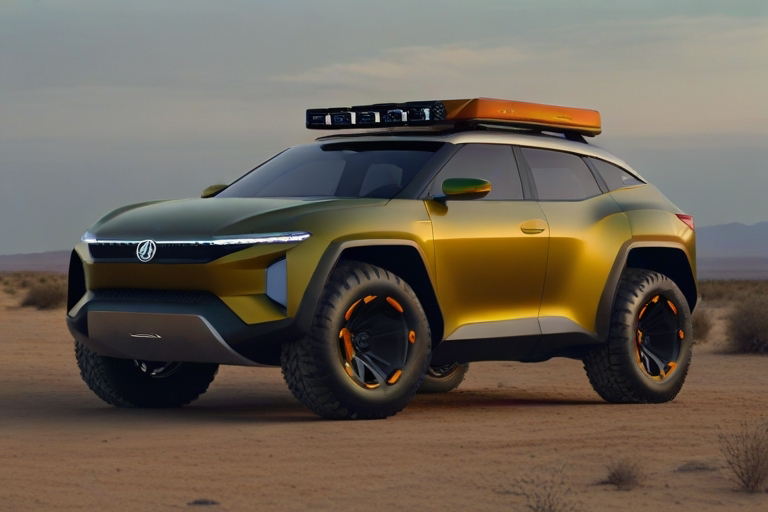As Qatar embraces the future of transportation, the electric vehicle (EV) emerges as a promising solution to reduce emissions, enhance sustainability, and meet the growing demand for eco-friendly mobility. With ample financial resources and a commitment to innovation, Qatar stands poised to lead the transition towards electric vehicles. However, as the saying goes, "we have the money, all we are lacking is design." In this essay, we'll explore the potential of EVs for Qatar and the crucial role of design in shaping their success.
Qatar's Vision for Electric Vehicles:
Qatar's ambitious Vision 2030 outlines a roadmap towards a sustainable, diversified economy, with a focus on environmental conservation and technological innovation. As part of this vision, the adoption of electric vehicles plays a central role in reducing carbon emissions, mitigating air pollution, and promoting energy efficiency. With its abundant renewable energy resources, including solar and wind power, Qatar has the opportunity to leverage clean energy to power its transportation sector, making electric vehicles an ideal choice for the country's future mobility needs.
The Benefits of Electric Vehicles for Qatar:
Electric vehicles offer a multitude of benefits that align with Qatar's strategic goals and priorities:
1. Environmental Sustainability: By transitioning from conventional internal combustion engine vehicles to electric vehicles, Qatar can significantly reduce its carbon footprint and combat air pollution. With zero tailpipe emissions, EVs contribute to cleaner air and a healthier environment for Qatar's residents.
2. Energy Independence: Qatar's reliance on imported fossil fuels for transportation presents economic and geopolitical challenges. Electric vehicles, powered by domestically produced renewable energy, offer a pathway towards greater energy independence and resilience.
3. Economic Diversification: Investing in the electric vehicle industry presents opportunities for economic diversification and job creation in Qatar. From manufacturing and infrastructure development to research and development, the EV sector has the potential to stimulate innovation and entrepreneurship, driving economic growth and prosperity.
4. Technological Leadership: By embracing electric vehicles, Qatar can position itself as a leader in sustainable transportation and clean energy technologies. By fostering a supportive ecosystem for EV innovation and investment, Qatar can attract talent, investment, and partnerships to propel its automotive industry into the future.
The Role of Design in Shaping the Future of Electric Vehicles in Qatar:
While the economic resources to invest in electric vehicles are abundant in Qatar, the key to unlocking their full potential lies in design. Design encompasses not only the aesthetic appeal of vehicles but also their functionality, usability, and cultural relevance. In the context of electric vehicles for Qatar, design considerations encompass several key areas:
1. Aesthetic Appeal: The design of electric vehicles must resonate with the preferences and aspirations of Qatari consumers. Sleek, futuristic aesthetics combined with elements of traditional Qatari craftsmanship and cultural motifs can create vehicles that captivate the imagination and evoke a sense of pride in ownership.
2. Performance and Range: Design plays a crucial role in optimizing the performance and range of electric vehicles to meet the unique demands of Qatar's climate and terrain. Aerodynamic styling, lightweight materials, and efficient cooling systems can enhance the efficiency and endurance of EVs, ensuring reliable performance in hot desert conditions.
3. Comfort and Luxury: Qatar's discerning consumers expect nothing less than the highest standards of comfort and luxury in their vehicles. Designing electric vehicles with spacious, well-appointed interiors, premium materials, and advanced amenities ensures that EVs offer a superior driving experience that exceeds expectations.
4. Infrastructure Integration: Designing electric vehicles goes beyond the vehicles themselves to encompass the development of charging infrastructure and urban planning considerations. Designing EV-friendly cities with ample charging stations, dedicated parking spaces, and smart grid integration is essential to facilitate the widespread adoption of electric vehicles in Qatar.
5. Sustainable Materials and Manufacturing: Designing electric vehicles with sustainability in mind involves the use of eco-friendly materials, efficient manufacturing processes, and end-of-life recycling considerations. By prioritizing sustainability throughout the design and manufacturing lifecycle, Qatar can minimize the environmental impact of its electric vehicles and contribute to a circular economy.
In conclusion, the transition to electric vehicles represents a transformative opportunity for Qatar to achieve its vision of a sustainable, prosperous future. While the financial resources are available, the key to unlocking the full potential of electric vehicles lies in design. By prioritizing design considerations that address the unique needs and preferences of Qatari consumers, while also embracing innovation, sustainability, and cultural relevance, Qatar can pave the way for a new era of electric mobility that benefits both the economy and the environment.








0 Comments